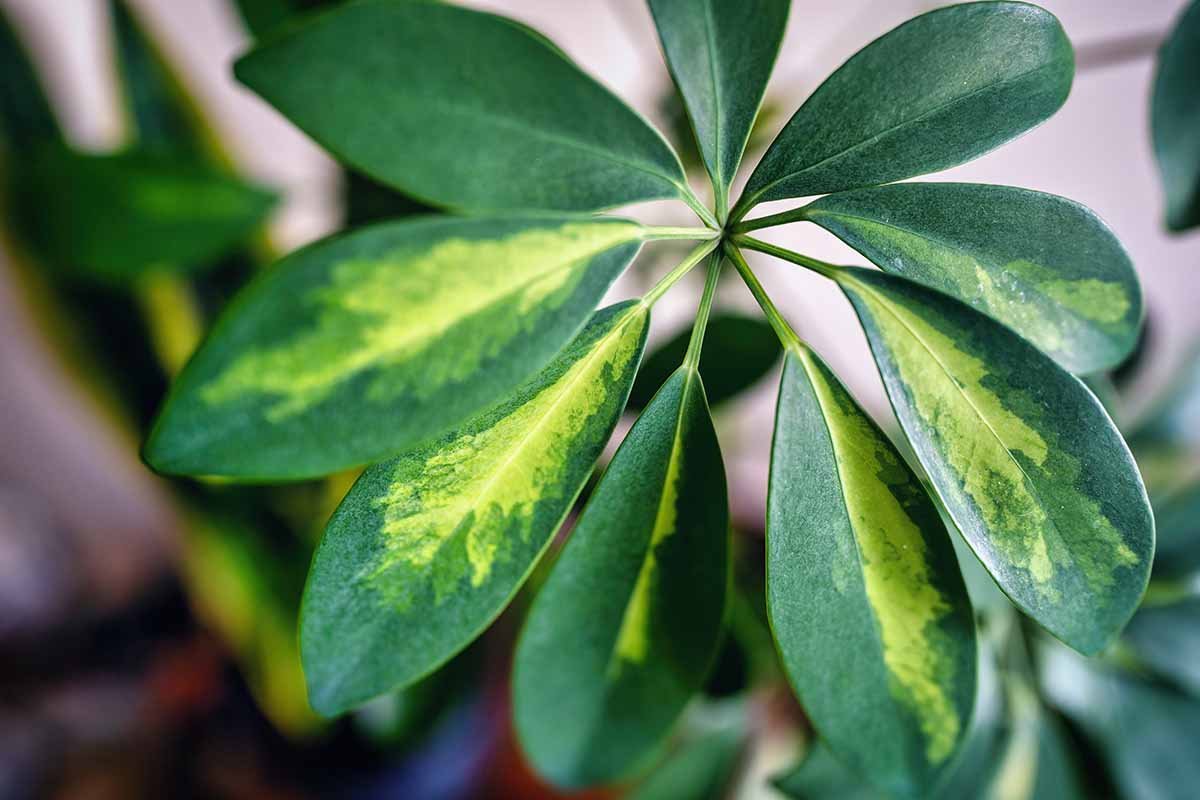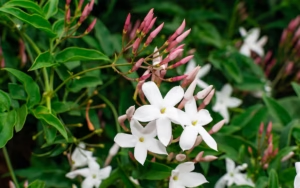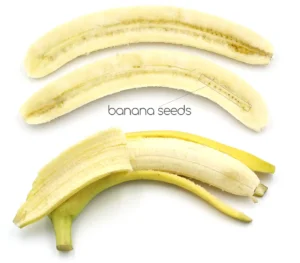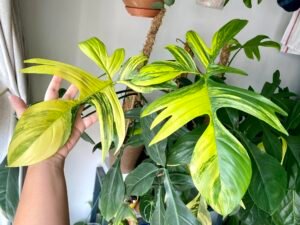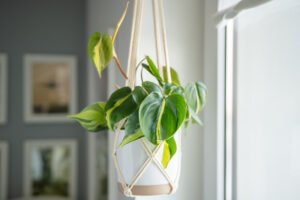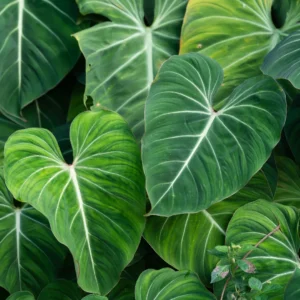The umbrella plant, scientifically known as Schefflera arboricola, is a popular houseplant that can add a touch of greenery to any indoor space. Known for its glossy, umbrella-like leaves and ability to thrive in low light, it’s an excellent choice for both beginners and experienced plant enthusiasts alike. In this comprehensive guide, we’ll explore everything you need to know about planting, caring for, and troubleshooting common issues with the umbrella plant.
Planting and Transplanting Umbrella Plant
When planting an umbrella plant, it’s important to consider its preferred environment to ensure it thrives. Here’s a breakdown of the essentials for planting and transplanting:
Choosing the Right Location
Umbrella plants do well in bright, indirect light but can tolerate lower light levels as well. However, the more light they receive, the healthier and bushier they’ll grow. It’s best to place your umbrella plant near a window that doesn’t receive direct sunlight to prevent the leaves from getting scorched. If you’re growing it outdoors in warmer climates, ensure it’s planted in a partially shaded spot.
Selecting the Right Soil
The umbrella plant prefers well-draining, loamy soil. It’s important to ensure that the soil allows excess water to drain away, as the plant’s roots are prone to rot in soggy conditions. A mix of potting soil and perlite or sand can create the ideal drainage.
Pot Size and Transplanting
If you’re transplanting your umbrella plant, ensure that the pot has good drainage holes. When selecting a new pot, choose one that’s slightly larger than the current one to allow room for the plant’s roots to grow. The ideal time for transplanting is during the spring or early summer, when the plant is in its active growing phase.
To transplant, gently remove the plant from its old pot and shake off the excess soil. Place the plant in its new pot, fill in with fresh potting mix, and water thoroughly. Avoid burying the stem in the soil, as this can lead to rot.
Umbrella Plant Care
Caring for an umbrella plant is relatively simple, provided you meet its basic needs. Here are some essential care tips to keep your plant healthy and thriving:
Watering
Umbrella plants prefer moderate watering. The key is to let the top inch or two of the soil dry out between waterings. Overwatering is one of the most common mistakes made by plant owners, leading to root rot. During the warmer months, water your umbrella plant more frequently, but reduce watering in the winter when the plant’s growth slows.
Make sure the pot has good drainage, and always empty any excess water from the saucer beneath the pot to prevent waterlogging.
Temperature and Humidity
These plants prefer temperatures between 60°F and 75°F (15°C – 24°C). Avoid placing them in areas with drafts or sudden temperature changes, such as near air conditioning units or heating vents.
Humidity levels should be moderate to high. If the air in your home is dry, especially in the winter, you may want to mist your umbrella plant occasionally or place it near a humidifier to help maintain moisture in the air.
Fertilizing
During the growing season (spring and summer), you can feed your umbrella plant with a balanced, water-soluble fertilizer every 4-6 weeks. In the winter, reduce fertilization since the plant’s growth slows down. Be careful not to over-fertilize, as this can cause the plant to become leggy or stressed.
Types of Umbrella Plant
There are a few varieties of umbrella plants, each with its own unique characteristics. The most common types include:
Schefflera arboricola (Dwarf Umbrella Plant)
This variety is the most commonly seen in homes. It features smaller, glossy leaves that form the signature umbrella shape. It’s perfect for indoor spaces and tends to grow more slowly than other types, making it easier to manage.
Schefflera actinophylla (Australian Umbrella Tree)
This type grows much larger than the dwarf variety, often reaching heights of up to 10 feet in the right conditions. It’s ideal for larger indoor spaces or outdoor gardens in tropical regions. The plant produces clusters of small, red flowers, adding an extra layer of beauty.
Schefflera delavayi (Chinese Umbrella Tree)
This variety is known for its darker green leaves and a more compact growth habit. It’s a great option for those who want a more refined look, and it’s more adaptable to different light conditions.
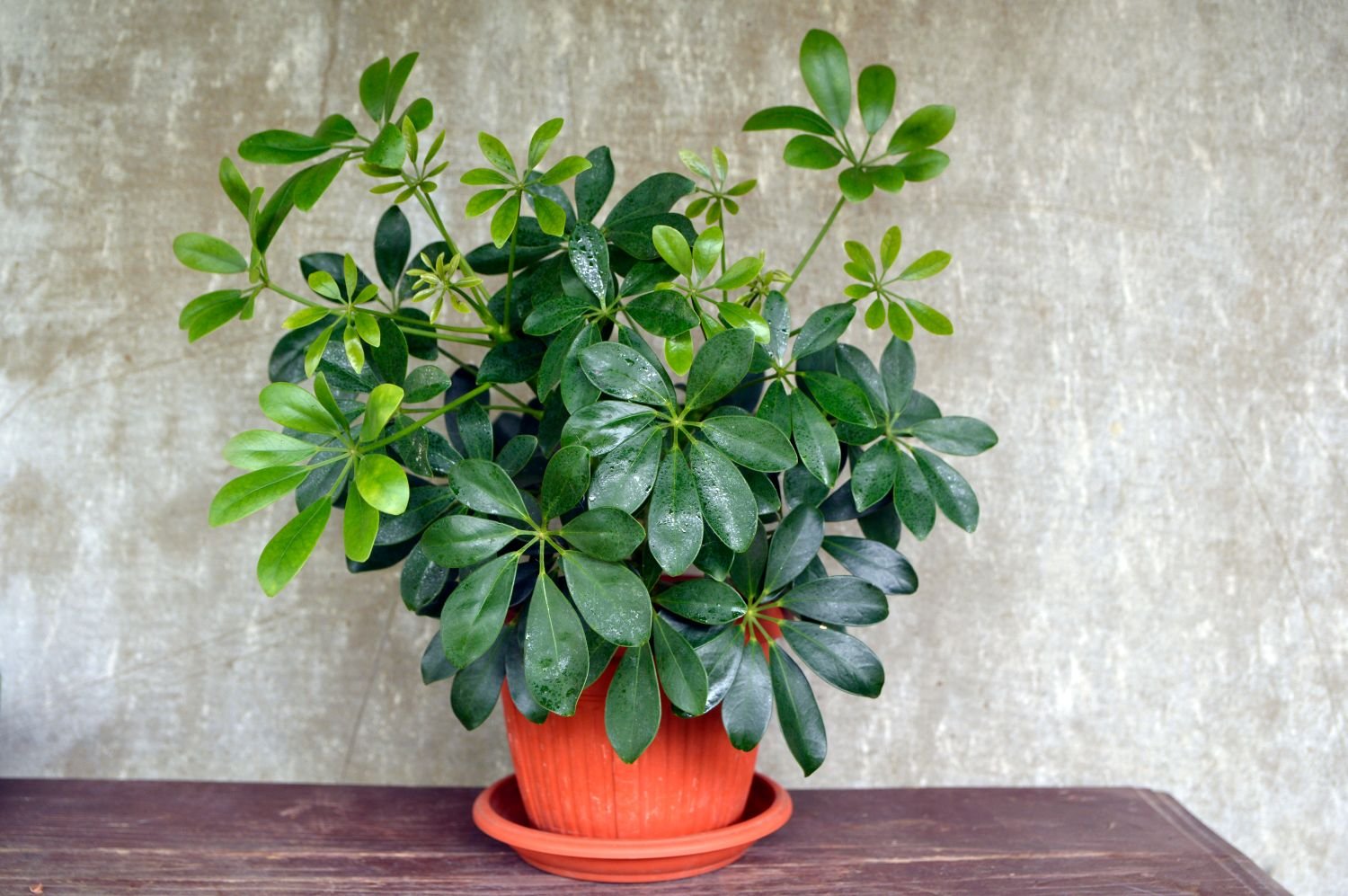
Pruning the Umbrella Plant
Pruning your umbrella plant helps maintain its shape and encourages bushier growth. Here’s how to do it:
When to Prune
Pruning is best done in the spring or early summer when the plant is actively growing. Avoid pruning during the winter months, as the plant’s growth slows down, and it may not heal as effectively.
How to Prune
To prune an umbrella plant, use clean, sharp scissors or pruning shears. Begin by cutting back any leggy or overgrown stems. Focus on removing any dead or yellowing leaves to encourage new growth. If the plant has become too tall or uneven, you can cut the main stems to shape it.
For a bushier appearance, you can trim the growing tips of the branches, which will stimulate the growth of lateral shoots.
Propagating Umbrella Plant
If you want to expand your collection, propagating an umbrella plant is easy and rewarding. Here are the steps:
Stem Cuttings
The easiest way to propagate an umbrella plant is by taking stem cuttings. Use a sharp, clean knife or scissors to snip a healthy stem with at least two leaves attached. Cut just below a leaf node.
Place the cutting in a glass of water, ensuring that the leaf nodes are submerged. After a few weeks, you should notice roots starting to develop. Once the roots are a couple of inches long, you can plant the cutting in soil. Alternatively, you can root the cutting directly in soil by dipping the cut end in rooting hormone and planting it in a small pot with moist, well-draining soil.
Air Layering
Another propagation method is air layering. This involves cutting the stem and wrapping it with moist sphagnum moss. After a few months, roots will develop, and you can cut the stem from the parent plant and pot it.
Potting and Repotting Umbrella Plant
Umbrella plants are typically repotted every 2-3 years as they outgrow their pots. Here’s how to do it:
When to Repot
Repot your umbrella plant when you notice the roots growing out of the drainage holes or the plant becoming top-heavy. Spring is the best time for repotting.
How to Repot
To repot, gently remove the plant from its old pot and inspect the roots. If they are circling the pot, prune them slightly to encourage new growth. Place the plant in a new pot that is 1-2 inches larger in diameter than the old one, ensuring the pot has good drainage.
Fill the new pot with fresh potting mix, and place the plant in the center. Backfill with soil and water thoroughly.
Overwintering the Umbrella Plant
In colder climates, umbrella plants need protection from frost. Here’s how to care for them in winter:
Indoor Overwintering
If you’re growing your umbrella plant indoors, keep it away from drafts and cold windows. Lower light levels in winter are normal, so you might want to rotate the plant occasionally to ensure even growth.
Outdoor Overwintering
If your umbrella plant is grown outdoors and you live in a zone where temperatures dip below freezing, bring it indoors before the first frost. If the plant is too large to move, consider covering it with a frost blanket during cold spells.
Common Problems with Umbrella Plant
Like any plant, umbrella plants can face a variety of issues. Here are some common problems and how to address them:
Yellowing Leaves
Yellow leaves can indicate overwatering, underwatering, or a lack of nutrients. Check the soil moisture and adjust your watering routine accordingly. If you suspect a nutrient deficiency, feed the plant with a balanced fertilizer.
Drooping Leaves
Drooping leaves are often a sign of dehydration. Check the soil and water the plant thoroughly if the soil feels dry. It can also be caused by sudden temperature changes or root rot.
Leggy Growth
If your umbrella plant’s stems become long and leggy, it may not be getting enough light. Move it to a brighter location or supplement with grow lights.
Common Pests & Plant Diseases
Umbrella plants are relatively pest-resistant, but they can occasionally attract a few common pests:
Spider Mites
Spider mites thrive in dry conditions and can cause speckled, yellowing leaves. To treat them, wipe the leaves with a damp cloth or spray the plant with insecticidal soap.
Mealybugs
These small, cotton-like pests can be removed with a cotton swab dipped in rubbing alcohol. You can also spray the plant with a neem oil solution to keep them at bay.
Root Rot
Root rot can occur if the plant is overwatered or the pot lacks proper drainage. If you notice a foul smell from the soil, remove the plant from the pot and trim away any rotting roots before repotting in fresh, dry soil.
How to Get an Umbrella Plant to Bloom
While it’s rare for umbrella plants to bloom indoors, they can produce small white or red flowers under the right conditions. To encourage blooming, ensure the plant is receiving enough light, water, and nutrients. Some varieties, like Schefflera actinophylla, are more likely to bloom than others. However, blooming is often seen in outdoor environments or larger spaces where the plant has ample room to grow.
FAQ
How often should I water my umbrella plant?
Water your umbrella plant when the top 1-2 inches of soil are dry. In warmer months, this may be once a week, but during winter, water less frequently.
Can I grow an umbrella plant outside?
Yes, if you live in USDA hardiness zones 10-11, you can grow umbrella plants outdoors. They prefer warm, tropical climates with moderate humidity.
Why are the leaves on my umbrella plant turning yellow?
Yellowing leaves can be caused by overwatering, underwatering, or a lack of nutrients. Ensure you’re watering properly and consider fertilizing if necessary.
How do I prune my umbrella plant?
Use sharp, clean scissors to cut back leggy or dead stems. Prune in the spring or summer for the best results.
Can I propagate my umbrella plant from cuttings?
Yes, umbrella plants are easy to propagate from stem cuttings. Place the cutting in water or soil, and it should develop roots in a few weeks.
Read also: Pistachio Plant: How to Grow and Care for Pistachio Plant

